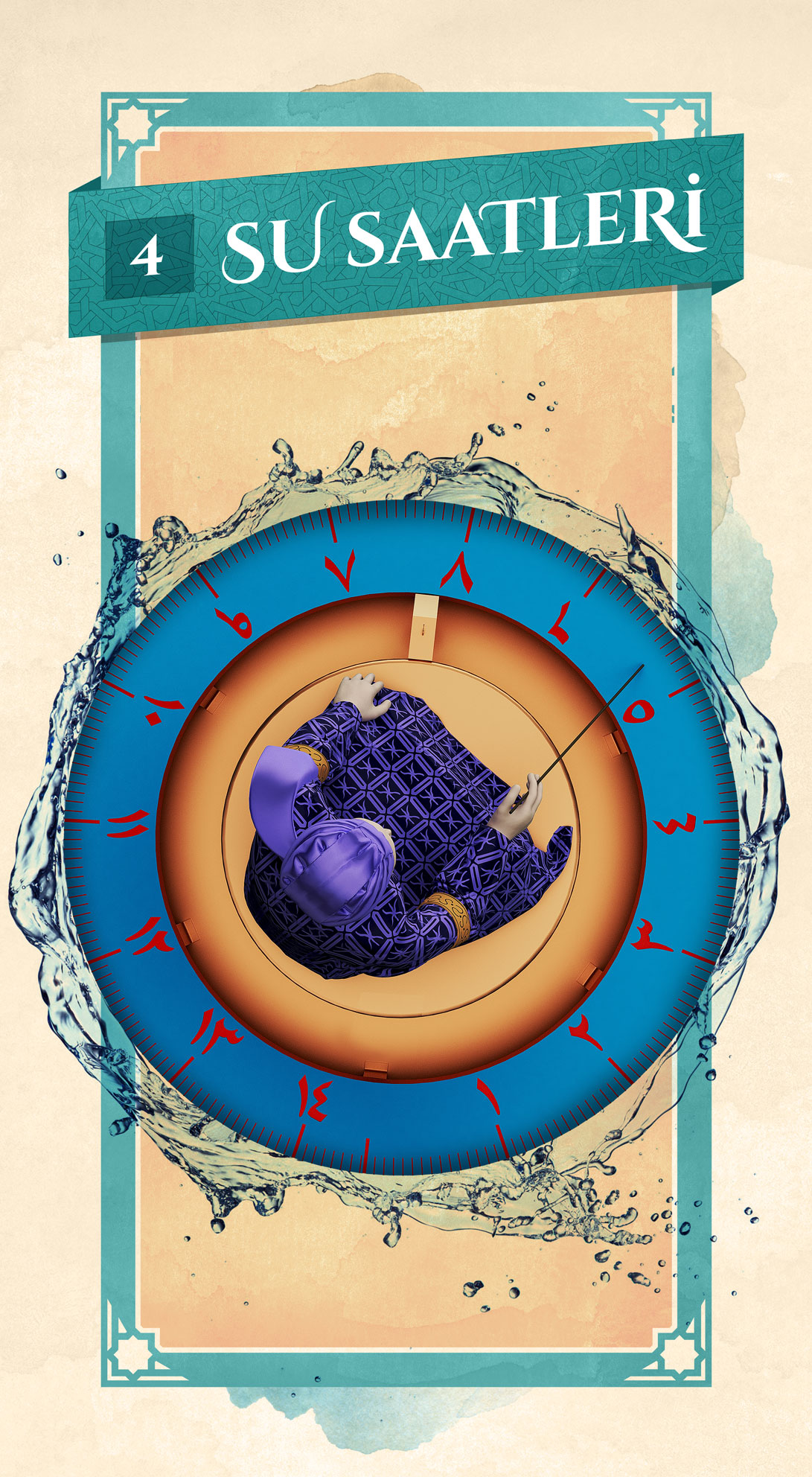Was it water flowing, or the time?
Time was a flowing river for the mankind. As the sun moved around the sky, water kept flowing, too. That’s why water was a convenient tool to measure the time. Flowing water is a clock. Therefore, if we can control the flow of water, we can measure the time as sensitively as we wish.
Jazari’s water clocks were the most sensitive and advanced clocks of his time that used the techniques of filling cups, draining cups, and falling cup, which was an invention of his, again.
Elephant Clock Reconstructed

Elephant Clock is the most interesting one among the portable clocks made by Jazari. This is due to the many sensitive mechanisms inside it, and the aesthetics of the movements it performs. This clock that’s based on the Equal Time System can show the beginning of every half an hour, and the minutes between them.
It measures the time by a cup that sinks slowly. It’s also powered by the force emerges by the sinking of this cup, and potential energy that comes from the released balls. A cup Jazari called as “tarcehar” sinks slowly filling with water through a hole at the bottom of it in half an hour. Slow descent of the tarcehar helps to measure the minutes. When it sinks completely at the end of half an hour, one of the bronze balls, which are held in a line inside the closed box on the top of the clock, rolls down, and starts some visual movements that trigger each other.
As the tarcehar floating on the pool inside the elephant’s belly sinks slowly, the clerk riding on its back rotates slowly to point at the minutes for half an hour. At the end of thirty minutes, the bird on the top rotates, the king raises his hand above the falcon next to him, and holds the beak of the bird perched on the other side with his other hand.
A bronze ball rolls out of the beak of the falcon that’s set free into the mouth of a snake waiting to grab it. As the snake’s head goes down with the weight loaded into its mouth, ball falls into one of two vases placed on the elephant’s shoulders, and vase makes a gong sound. Once its head is free of the weight, snake goes back up, and in the meantime, the clerk goes back to his original position. As the snake goes back up, it also pulls the sunken cup up from the bottom, draining the filled water at the same time, prepares for the next thirty minute cycle. The dropped ball goes into the empty space inside the elephant’s neck, and the mahout hits the metal cap on the top of its head twice, one with the stick in one hand, and one with the pickax in the other.
A Multi-cultured Fairytale
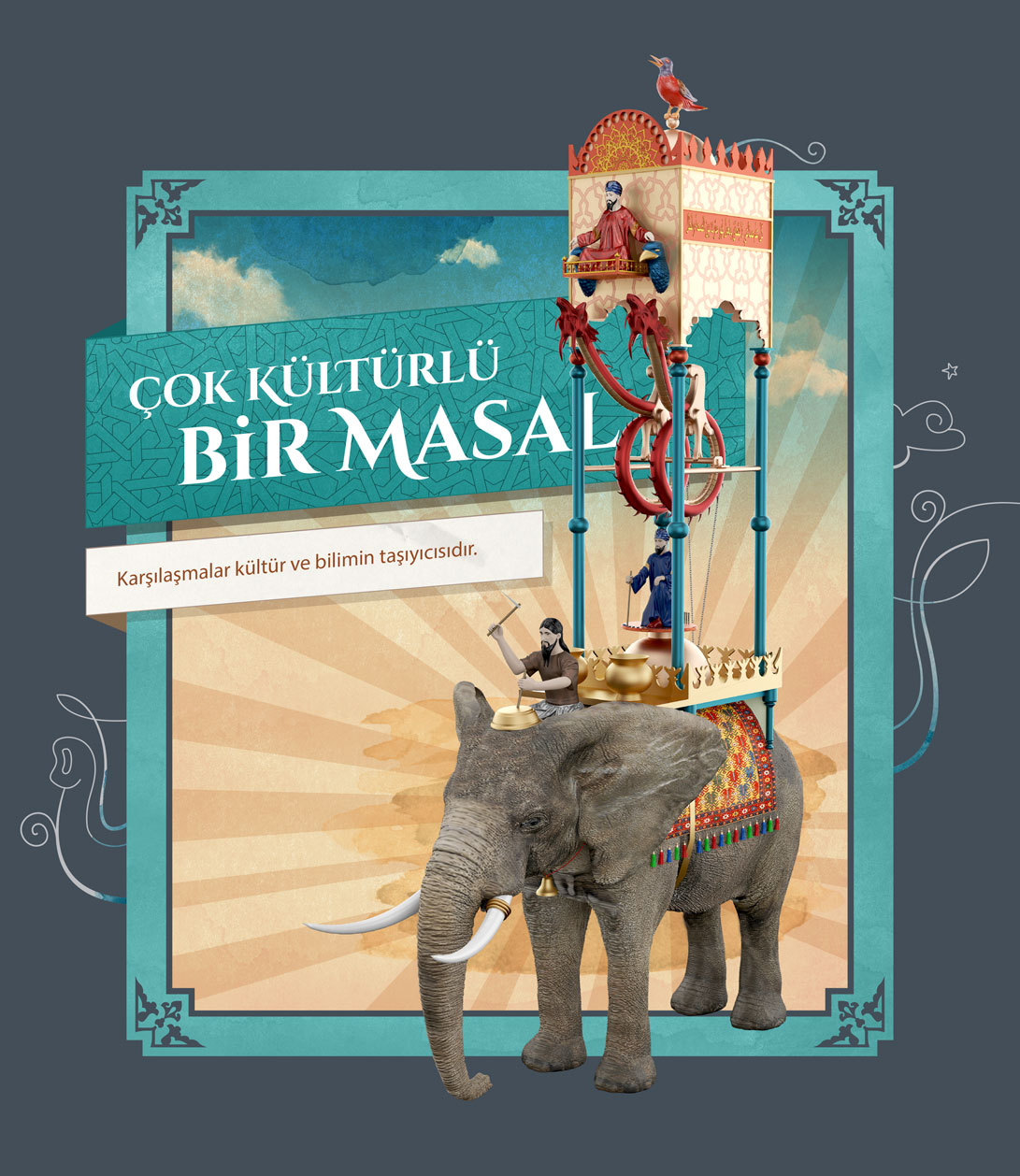
Encounters are the conveyors of culture and science.
Dragons, elephants, mahouts, rajas, courtiers, hawks, phoenixes, peacocks, rugs, candelabras, vases, and many other characters that jump out of fairytales to land or perch on Jazari’s machines.
Jazari’s Elephant Water is one of the most magnificent examples of this multi-cultured fairytale. With his vast knowledge over a very large geographic area from Mesopotamia to China, Mongolia, India, Egypt, Mediterranean, Persia, or Greece, Jazari projected his intellectual side to his machines.
Encounters was the most important factor that enabled people exchange knowledge in ancient times. Other than the influences he got from scientific and cultural knowledge that came before him, Jazari also influenced Western Europe through his encounters with Crusaders and Andalusia.
Elephant Clock Historical Scene Imagery

In this scene, Jazari shows Elephant Clock to Sultan Nāsir al-Dīn Mahmud and his courtiers, explaining how it works. Describing the device with all its refined details, Jazari mesmerizes people around him. These people, who see so many mechanisms inside a device for the first time, can’t hide their admiration. Jazari points at each of the most interesting elements of both Islamic culture and other prominent cultures, explaining how he managed to fit all them inside the same device.
War Elephant Figurine
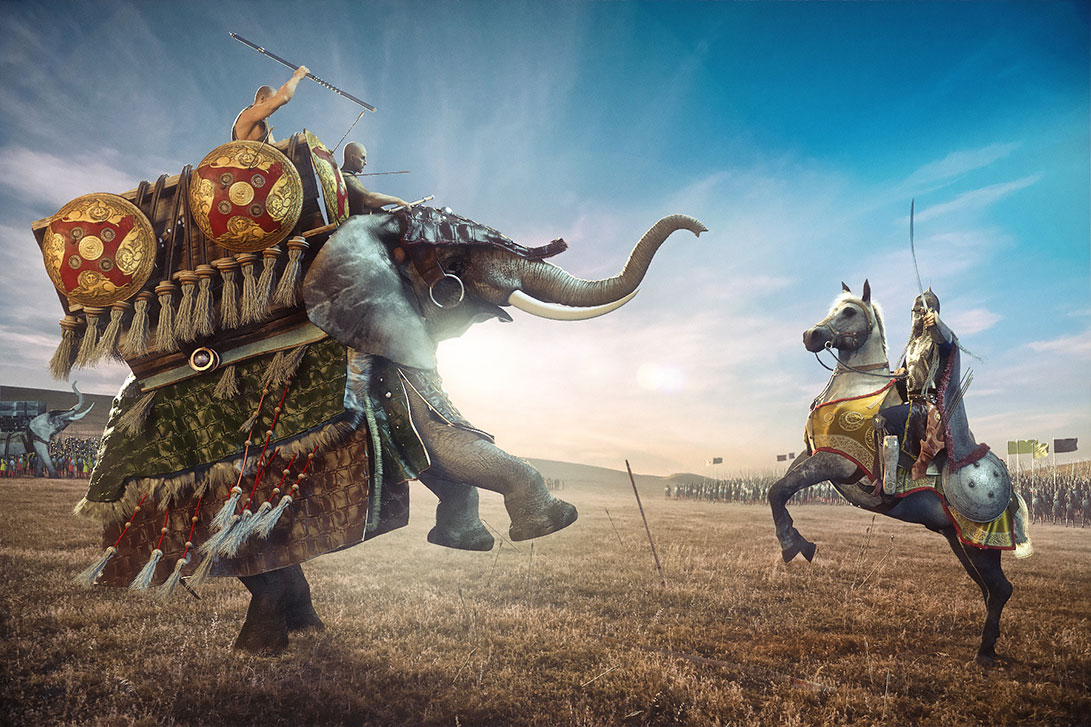
One of the war elements of ancient times and Middle Ages was the elephants. They’re thought to have been used in Indus area and India for the first time. Sitting in a special compartment placed on the back of an elephant, the archers and lancers were able to gain a leverage against the enemy, and they also used the elephant’s incredible mass, moving through the enemy lines.
Another highly important historical record about the use of elephants in wars was when the famous general Hannibal brought his elephants for the Punic War Second against the Romans. In this war, Hannibal was able to move his elephants from Spain to northern Italy, passing them over the Alpines. Despite the Romans managed to defeat the elephants in the end, they were scared of Hannibal’s elephants so much that they banned the elephant husbandry within their borders.
Almost all the armies of ancient world used the elephants. However, since they were much more cumbersome compared to the horses, they were left behind eventually.
Snake Mechanism

This mechanism was developed by center of gravity and moment calculations.
Center of Gravity – It’s the effect of a solid object’s weight. In another word, the center of gravity is the location of where the gravity force implies on the entire mass of an object combined.
When an object is hung by a point of it, vertical alignment that goes through it from where it’s hung is balanced in a way to go through the center of gravity. Based on this feature, we can pinpoint the center of gravities of the objects. According to this principle, when an object is hung through two points of it, the exact location where the vertical alignments intersect is the center of gravity for the object.
Moment – The rotating effect of a force that causes a body to rotate about a specific direction or axis. If the rotation point is determined at another point instead of the center of gravity, it creates a moment with the object’s weight, and object rotates until it goes back to balance.
The working principle of snake mechanism:
The shape of the snake, weight distribution by metal density in various parts, and total center of gravity is shown in the figure below.
1. In the absence of any external effects, the snake is in balance with its mouth leaned on the hawk. Since the center of gravity is on the right side according to the axis 0, it rotates upwards with the moment effect.
2. Since the 95 gr. ball’s moment beats the moment of center of gravity when it hits the snake’s mouth, the mouth moves downwards.
3. When the snake reaches the bottom, it releases the ball and moment disappears. Therefore, center of gravity of the snake moves back to the axis 0, and it moves back up to its original position.
Try!
1. Take one of the balls from the box below, and place it into the channel above.
2. Push the tarcehar down to the bottom with your finger, and let it fill completely with water.
3. Wait… Sinking of the tarcehar will change the channel’s balance, and the ball will start rolling.
4. While going through the mechanism called “mizan” that decides which direction the ball will continue, it will turn the mizan to other direction, allowing the ball fall into the other snake’s mouth.
5. As the snake releases the ball into the box below, tarcehar will be emptied, and the snake’s head will move back up to its original position to reset the system.
Mahout Mechanism
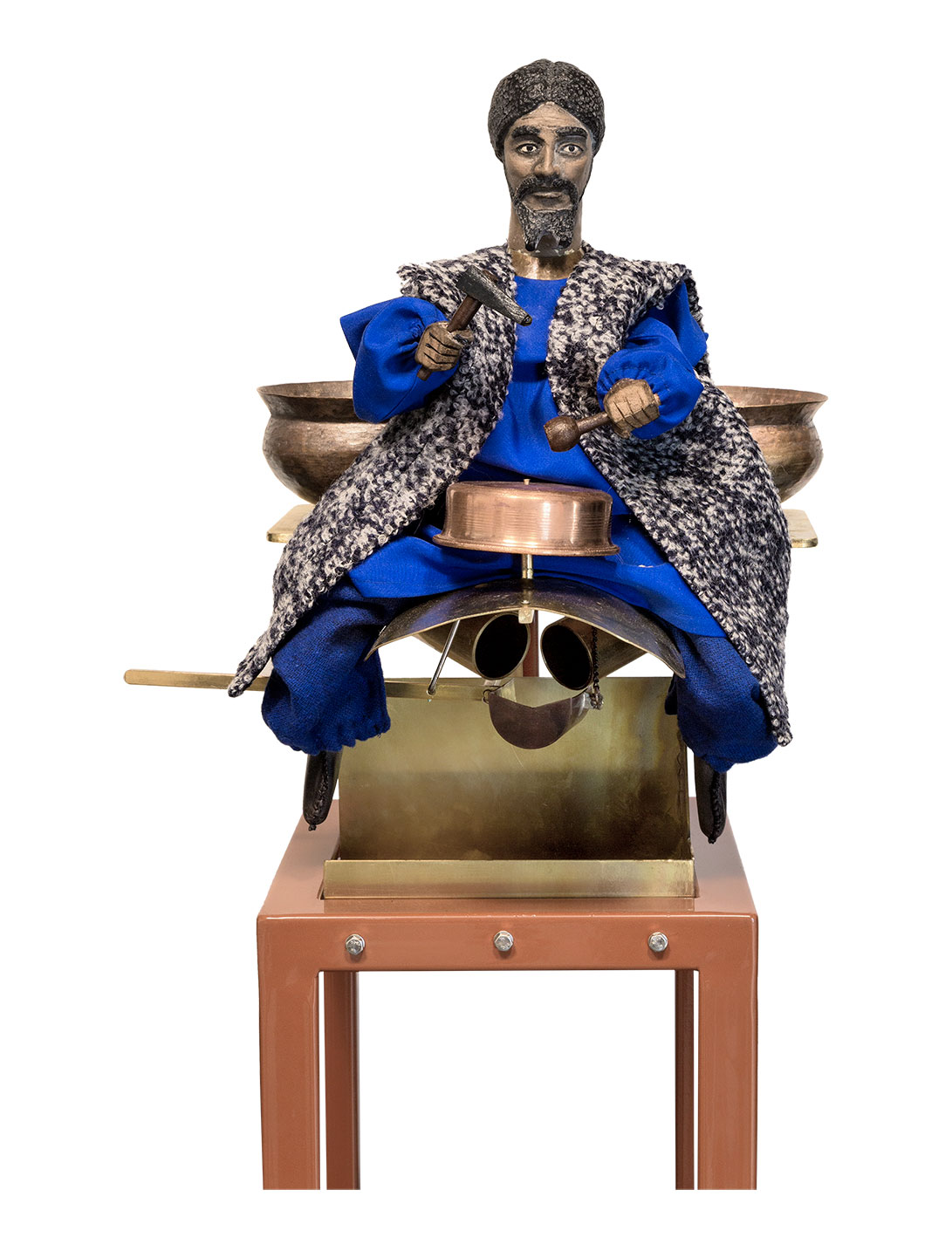
In this system, the principle of balance between parallel forces and moments.
Momentler dengesi
Balance of moments – When an object is balanced (in equilibrium) the sum of the clockwise moments is equal to the sum of the anticlockwise moments.
Working principle of the mahout
Mahout’s arms move by the “spoon mechanism” inside it. This spoon mechanism breaks the equilibrium between the moment of the ball’s weight and the arms.
- Since it is 2/5th as heavy as the other, the arm that holds the axe is up in the air.
- The arms are positioned in a way to move from inside the mahout, and connected to the spoon mechanism with a stick and a chain.
- Spoon mechanism is in balanced position inside the elephant’s head with its own axis. There is a spoon-like structure that holds the ball when dropped.
- The arm holding axe moves down with the force upwards, hitting the cymbal.
- The other arm goes up with the downwards force of the chain.
- When the ball rolls out of the spoon and falls, arms go back to their original positions, while the second arm moves down to hit the cymbal and complete the cycle.
Try!
1- Take one of the metal balls and drop it into one of the metal boxes behind the mahout.
2- You can observe how the ball rolls into the spoon system under the mahout.
3- You will see that with the spoon system, ball’s moment moves the axe holding arm downwards to hit the cymbal, while the other arm goes up.
4- When the ball is released from the spoon, going back to its original balanced position, you will see the other arm hits the cymbal while the axe holding arm goes up.
Dragon Figurine
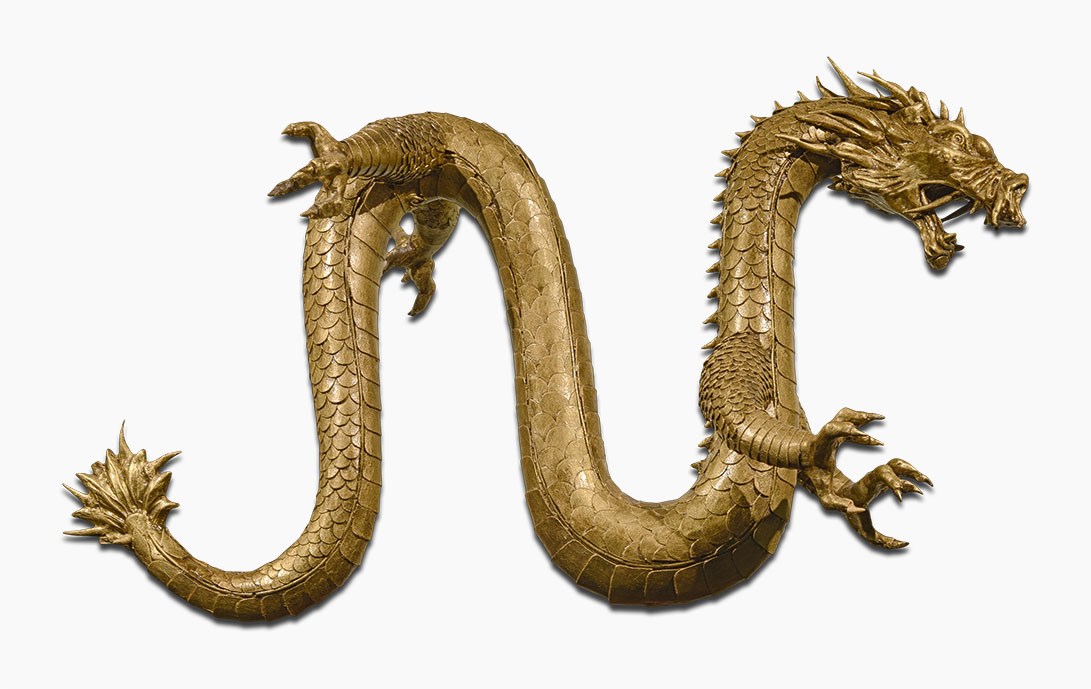
Dragon figure symbolized health and happiness in ancient Turkish culture. Having an important part in Chinese and Turkish mythologies, dragon figure varies in shape and style, based on the location it’s used. Dragon figure has a vast application area with the connection to skies and water elements. While it symbolized abundance, prosperity, power, and might in early Turkish culture, when the connection to near Asian cultures was established, this symbol lost its importance, and became the symbol of evil. The symbol of emperorship, and sometimes connected to elixir of vitality in ancient Chinese mythology, dragons affected Turkish culture, too. In Turkish culture, it symbolized the water, abundance, and rebirth. And again, as it was in Chinese culture, it was used as the symbol of a year in Turkish culture. In Anatolia, among the ruins left from Seljuks and other early Turkish lordships, dragon figure appears often in the palaces and hospitals.
Cup Water Clock Reconstructed
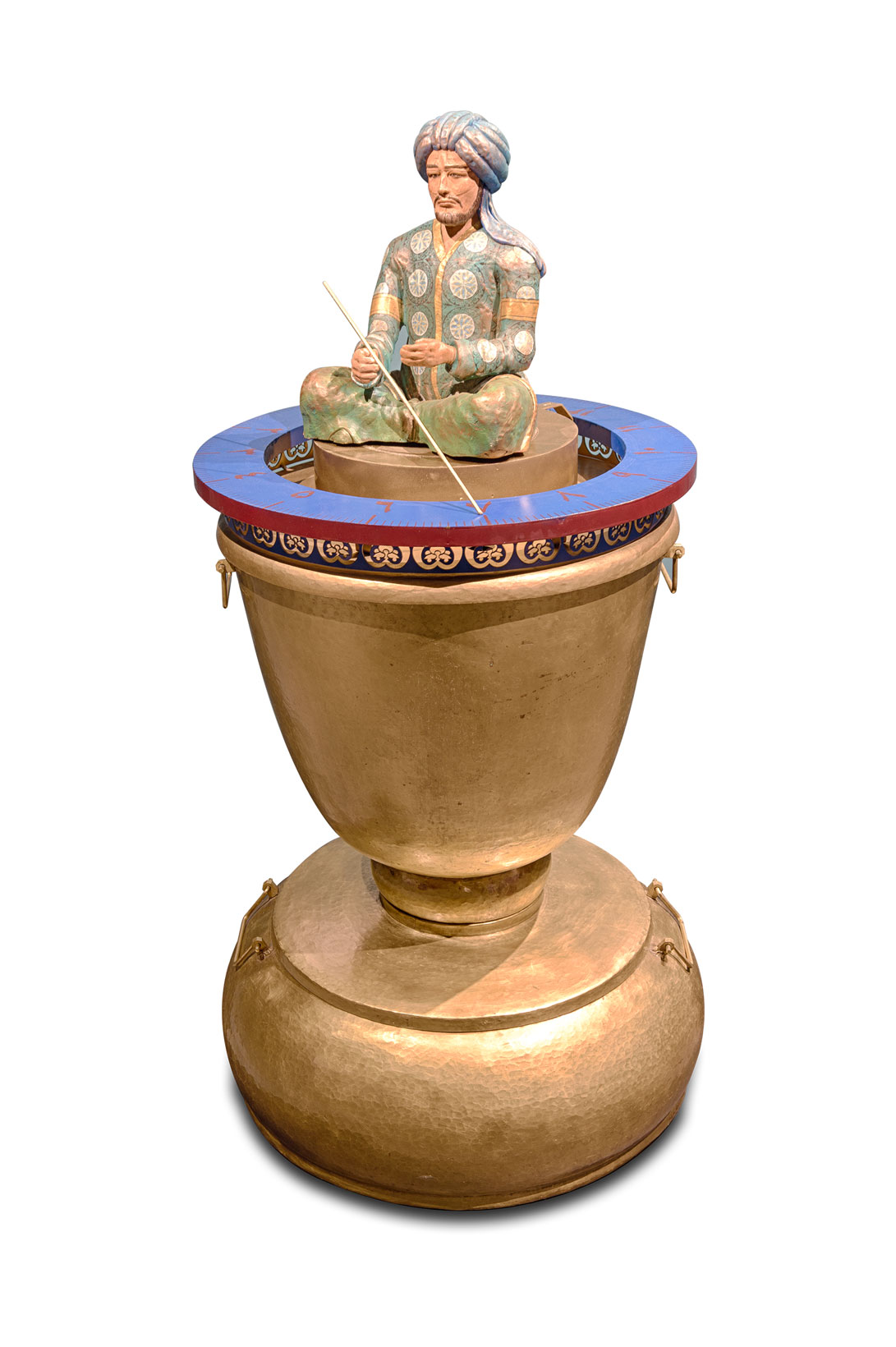
Jazari informs us that he made this clock as portable so that the Sultan could carry it along during the war campaigns. It measures the time with the emptying cup technique. While it uses the Egyptian conical cup principle to solve the flow control problem, the surfaces were made parabolic so that the flow could follow the curvilinear decrease.
It works as follows: water filling the cup shaped chamber trickles out into the chamber below during a day or a night. In the meantime, the float inside the cup slowly goes down, and a chain connected to this float, with the help of a pulley system, rotates the clerk above, making it show the time on its dial. It’s vital for the water to go down at the same rate so that the dividing lines on the dial should be spaced evenly. For this aim, Jazari made a very important adjustment. Differently than the conic image in his book, he swells the side of the cup along a curve, making trials for each hour.
This clock measures the time based on equal time system we use today. The water piled up in the lower chamber is filled back into the cup at the end of each day and night – adding some to replace that is vaporized or lost for some other reasons during the time – so that the clock is reset. The chamber is adjusted in a way to empty in 14.5 hours, and the dial is divided into 14.5 equal slices so that it can measure the longest day and night. However, Jazari suggested an additional sundial so it can show the sunrise and the sunset, following the solar time with rings that change in size to follow the lengthening of the days.
As we see in many of Jazari’s clocks, the clerk figure has a very striking part in this one, too.
Cup Water Clock Transparent Mechanism
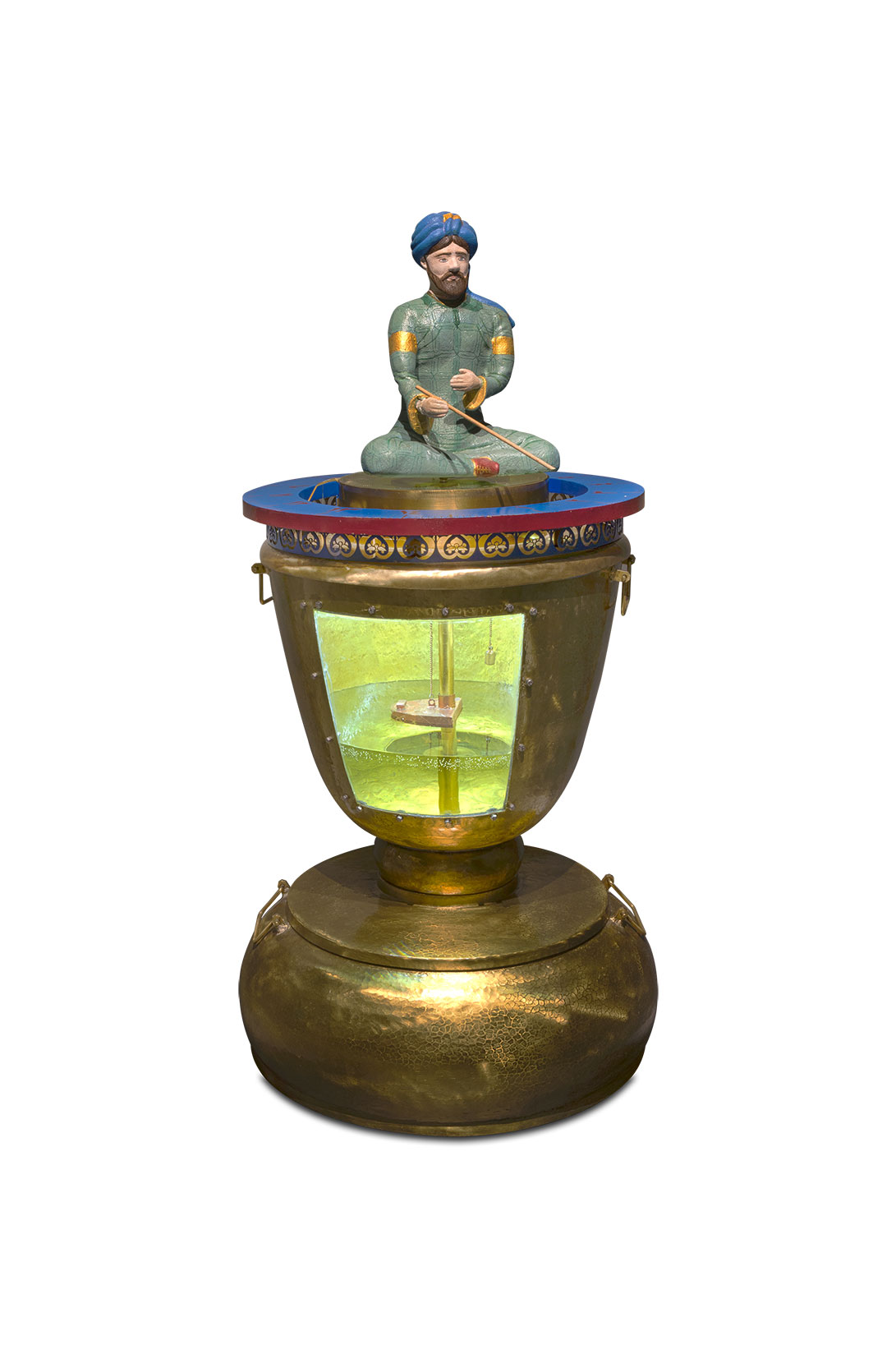
To make the interior mechanism visible, a part of front façade of the clock is replaced by a transparent material so that we can see the mechanisms inside the Cup Water Clock, and understand how they work. As we can see through this transparent part, the float inside the cup slowly goes down, and a chain connected to this float, with the help of a pulley system, rotates the clerk above, making it show the time on its dial. It’s vital for the water to go down at the same rate so that the dividing lines on the dial should be spaced evenly. For this aim, Jazari made a very important adjustment. Differently than the conic image in his book, he swells the side of the cup along a curve, making trials for each hour. Through the transparent part, we can see how the water applies pressure to the cup, and how it measures the water by its parabolic shape.
Parabolic Flow Mechanism
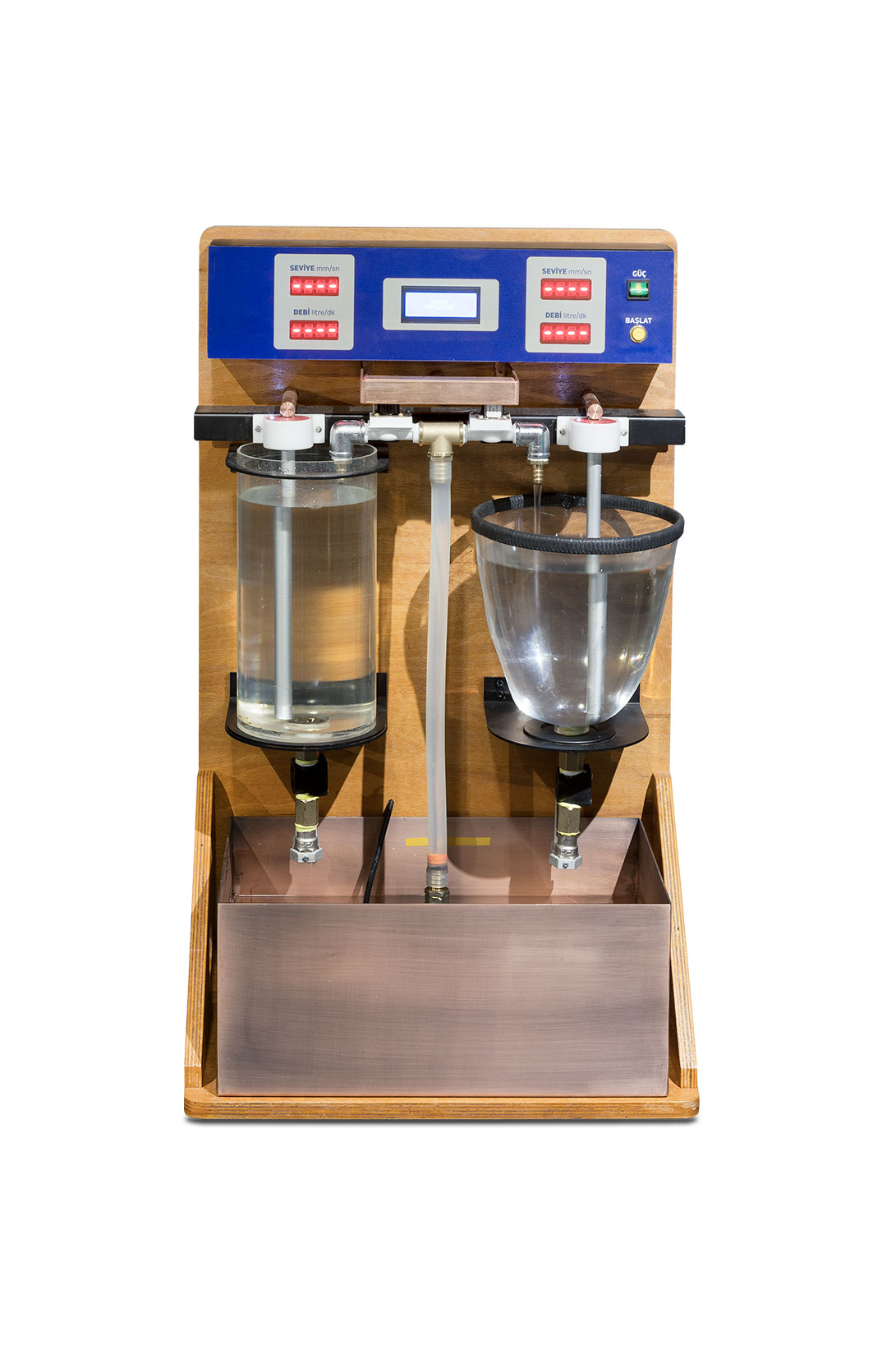
This mechanism is based on the pressure dynamics of the liquid. Liquid Pressure – Liquids have no shape, and they take the form of the cup they fill. Stagnant liquids apply pressure both to the bottom and the sides of their cup. For a cup filled with any liquid, the pressure on all the points at the same level of depth is same, and the reason of this pressure is the weight of the liquid. These are the symbols in the mathematical liquid pressure formula:
h the surface level of the liquid from the bottom
d density of the liquid
g force of gravity
As seen in the figure, the pressure applied to the bottom of three different cups filled with same amount of liquid is same, because liquid pressure depends only on the liquid’s surface level, density, and force of gravity. When the liquid leaks out through a hole at the bottom of a cup, the flow (meaning the amount of liquid that leaks in a given time) decreases as the surface level goes down. The reason for this is the fact that pressure decreases with the level of surface.
Parabolic flow mechanism:
In this mechanism, you will see the differences between a cylindrical cup and the parabolic cup Jazari used in this clock so that it could measure the time equally.
- Fill two cups with the same amount of water, and open a hole at the bottom of each with the same dimensions.
- With the sticks inside the cups, you can follow the water surface levels and speed of decrease.
- You can see the flow decreases as the surface goes down.
- Also you can see that while the water level decrease slows down in the cylindrical cup, it doesn’t change in the parabolic one.
So we can say that while the decrease speed of an object inside the cylindrical cup varies, it remains fixed in the parabolic cup.
Cup Water Clock Historical Scene Model
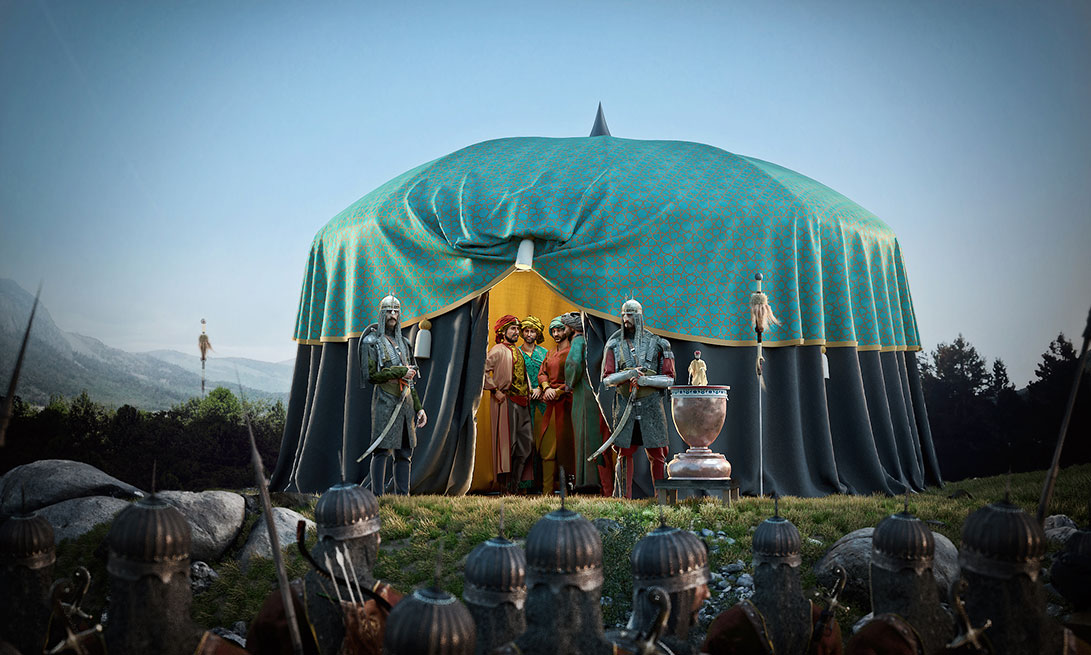
It’s known that Jazari made this cup clock portable so that Sultan can carry it along when he leaves the palace. Again, in this scene, when Sultan is in a campaign, the clock stands in front of his tent. Jazari and his patrons, the Artuqid sultans, cared of measuring the time sensitively. Clearly, during the important events like wars, the measuring of time has a vital importance. The time of resupplying, of battle maneuvers, or of a clash could be measured quite easily by a clock that could be carried by the sultan and his commanders.
One Who Rules the Information Rules the World
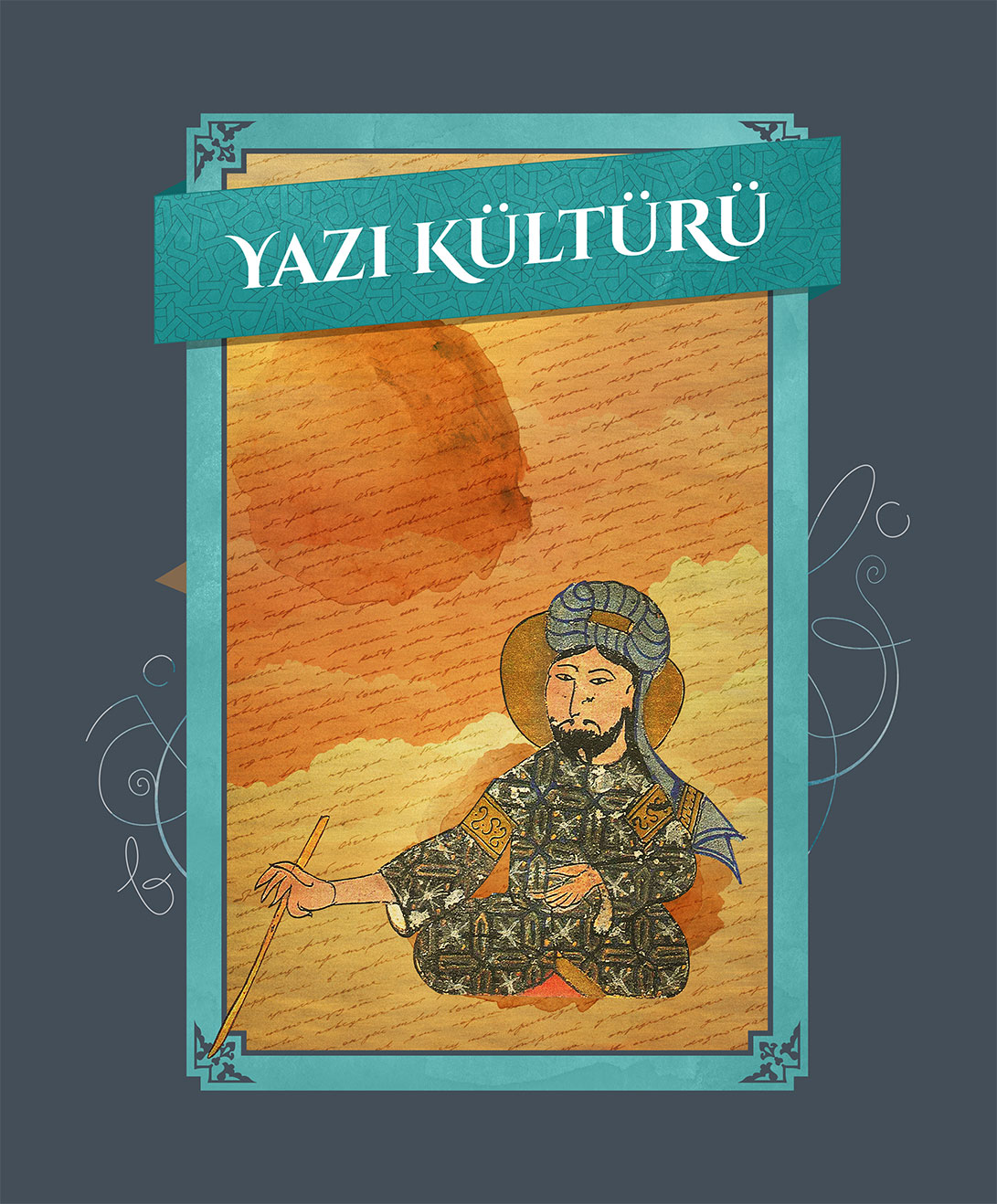
Writing is the greatest technique, and the greatest idea that changes the minds and the environments. Those civilizations who could use the writing well were the leaders of their times.
The clerk figurine emphasizes the importance of the writing and bureaucracy among Artuqids, which was an Anatolian lordship that followed the Seljuk’s governmental traditions. One of the figures we often see in Jazari’s machines is the clerk figure. This figure with his pen in hand, recording the issues in governmental life, also records the time in Jazari’s machines. Time flows through the clerk’s pen. For both great Turkish countries like Seljuk, or city kingdoms like Artuqids, writing was a vital part of everything. They were good at controlling the information due to this fact, and it didn’t only bring them power in cultural arena, but also in politics as well.
Alternative Year Dial
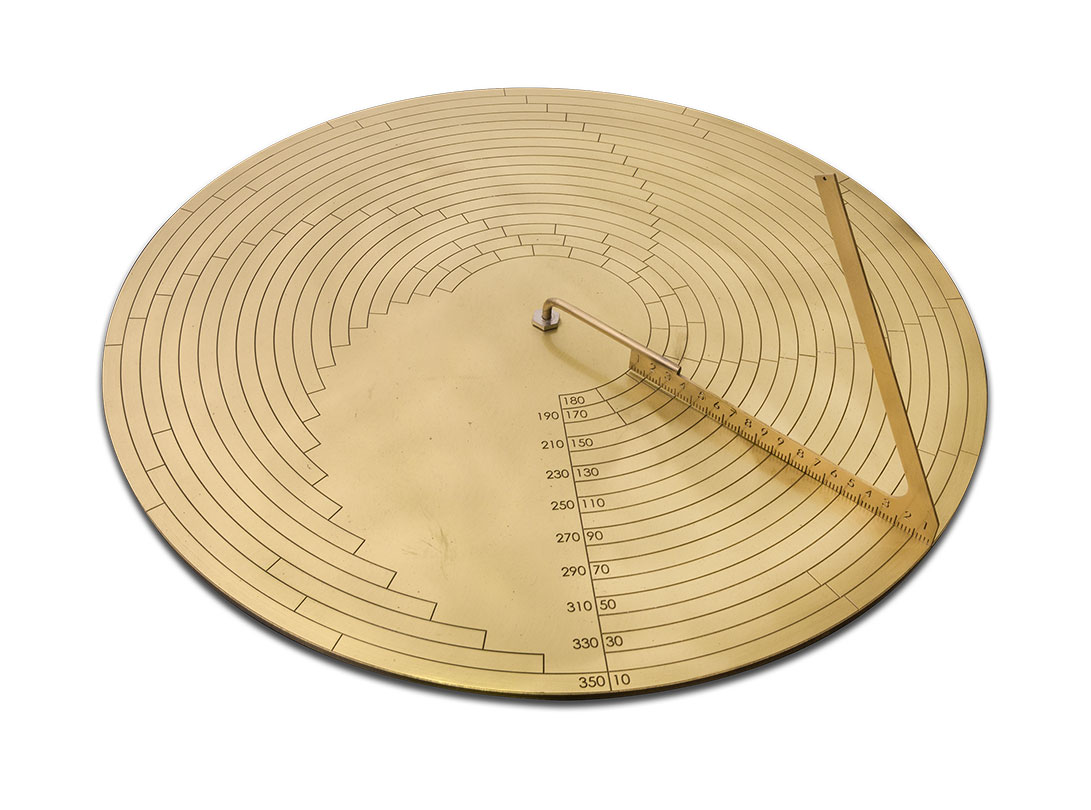
The dial suggested by Jazari for this clock is based on 14.4 slices as hours. However, in his book, Jazari also suggested a dial that could show the time for a whole year, based on the solar time. While the pointer moves according to the equal time system, with a clever revision done in the dial, we can be informed of the solar time depending on the length of days and nights. According to the length of days, the arcs are drawn in the picture for each 10 days, and when these arcs are divided into 12 equal angles, the pointer shows the solar time. When we look at the correct arc of the day, pointer will tell us the sun will be at its zenith at the end of 6th slice, and be setting at the end of 12th. Jazari also suggested a pointer with the shape of a bowstring that each day has its own position.
CWhile creating the Cup Clock, he developed this year dial to adjust the hour dial according to the solar time. On the dial, there are 181 arcs. Each of them symbolizes the lengths of days and nights along a year. The longest arc shows the longest day at one point of the year, and the longest night at the other. These arcs are divided into 12 equal parts so that they show the time according to the length of night and day based on solar time.
The year dial you see in this image was drawn by E. Wiedemann in 1350’s as a simplified adaptation from Jazari’s manuscript. As seen here, instead of 181 arcs, there are 18 rings, each showing 10 days. While it was supposed to be divided into 12 parts, they’re shown in 4 sections of 3 hours in inner rings to make them clearer. Also, Jazari suggested to divide the outermost ring into 14.5 parts so that the dial could be used based on the equal time system.
Cup Water Clock Time Machine
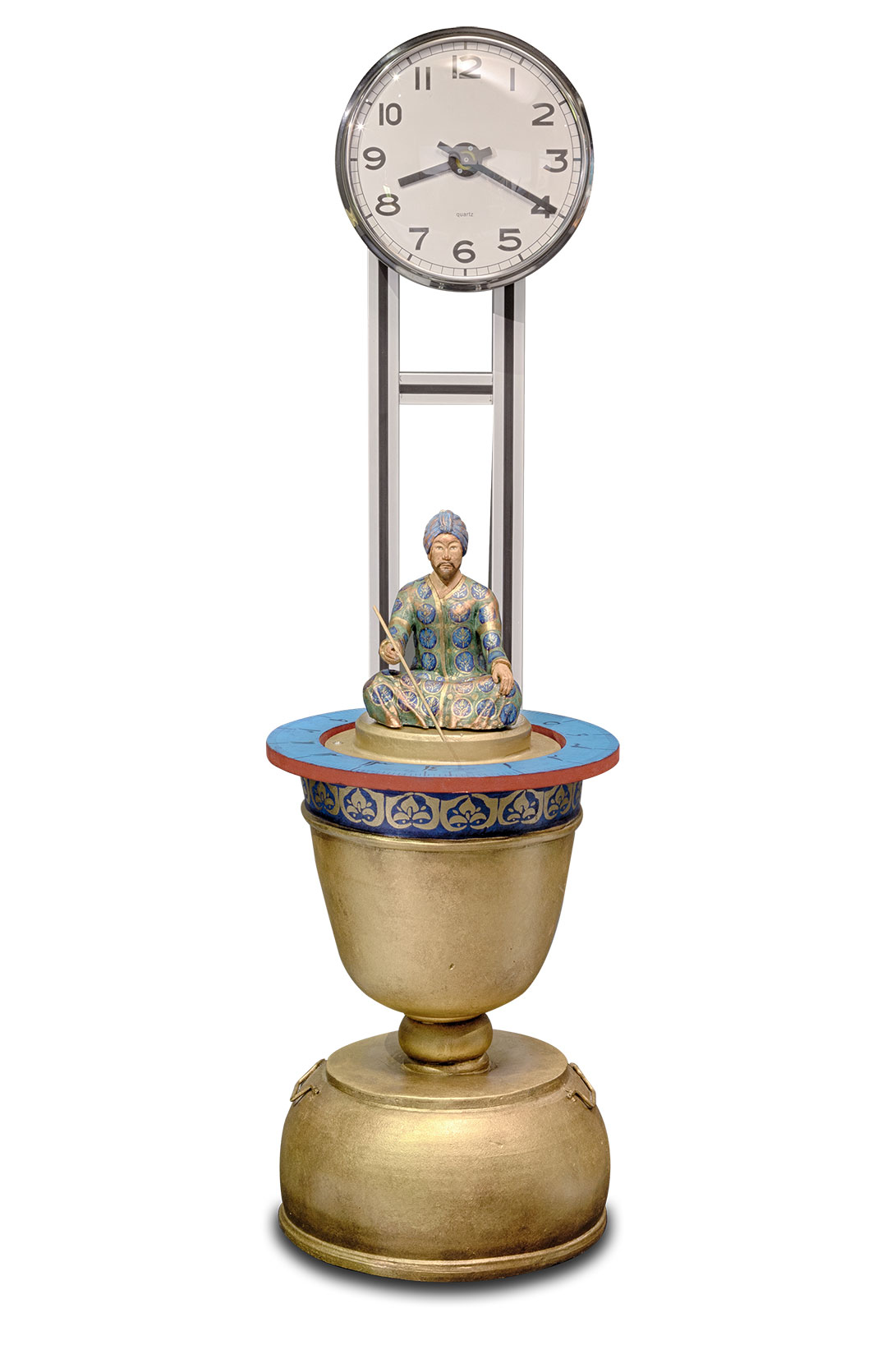
The Cup Water Clock works by the equal time system, and measures the 14.5 hour time in equal parts. During the time of Jazari, both solar time and fixed time started with the sunrise. When it set, based on the length of shadows, dial showed 12. However, since the fixed time system is based on equal time units, the pointer showed the different numbers in different times of the year. Therefore, on the longest winter day the sun would set at 2:30 pm, and on the shortest summer day it would set at 9:30 am. Jazari adjusted this clock in such a way that it showed the time correctly on the longest day or night.
In this interactive mechanism, June 21st was taken as reference since it was the longest day for 14.5 hours in Diyarbakir where this Cup Water Clock was used. When the clerk’s pointer points at 00:00, meaning the sunrise, modern clock shows 6:10 am. As the user rotates the clerk, both clock moves forward, and when the pointer shows the sunset at 2:30 pm, modern clock shows 8:40 pm.
Boatman Water Clock (Interactive Pool) Reconstructed
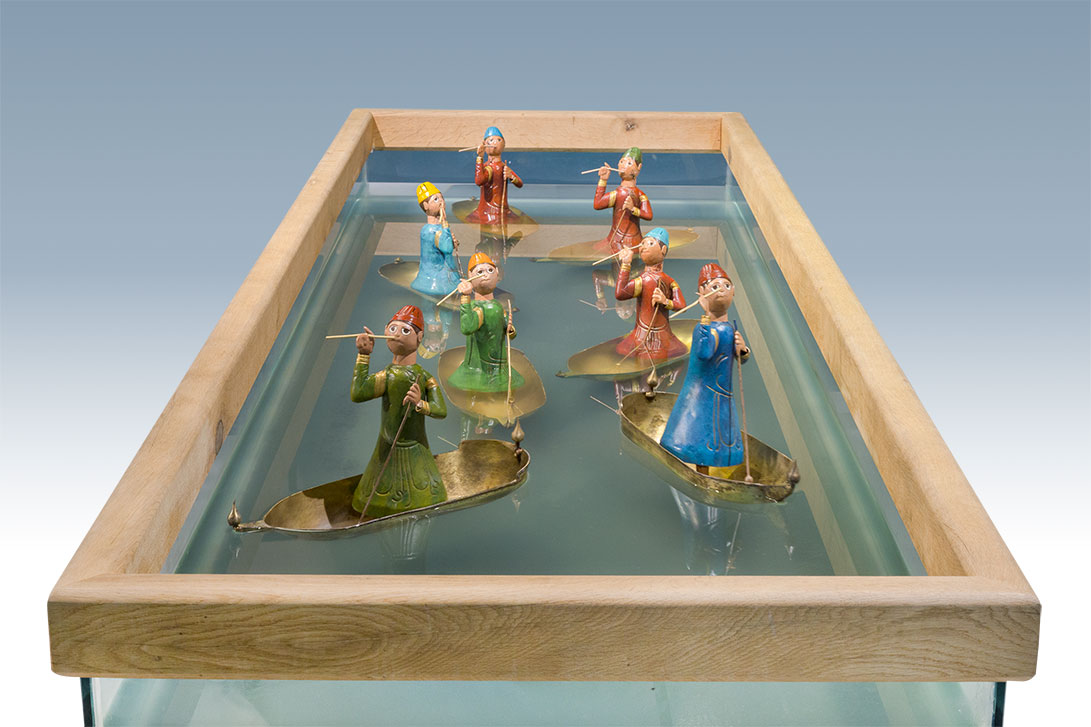
With its smaller dimensions compared to the other water clocks, Boatman Clock was designed as a portable clock that was possible to be carried all around the palace. There’s a boat floating on a small pool, and a boatman standing inside it. The boatman has a shovel in one hand, and a flute he holds to his mouth in the other.
The Boatman Clock is the most visible application of the tarcehar principle of Jazari. Indeed, the boat works exactly as a tarcehar, measuring the total time. When it goes down fast in the end, it signals the end of its time with a loud thud. Actually, Jazari included this device into the last chapter of his book, titled “other devices.” However, since it shows a unit of time with the sinking cup technique, and since it’s the most visible application of the tarcehar, we decided to include it in this chapter for the water clocks. Indeed, this device should be seen as an alarm device that shows the end of a one-hour time.
Boat leaks water through a hole at the bottom of it, and by the end of an hour, the water piles up to a weight that sinks it completely. As it sinks, the boatman blows his flute until it completely sinks, as if he asks for help. When it completely sinks, the boat is taken out of the water, and replaced back on the surface. Jazari wrote in his book that he made this device to adjust his other clocks.
The hollow spaces inside the body and head are separated by a circular plate in a way it won’t leak water or air. There is a whistle ball inside the head. As the boat goes down, water rises from the end of his skirt, pressurizing the air, and blowing the whistle. The air inside the boatman prevents it from sinking fast. Again, the boat and the boatman theme of this clock represent the river trips and entertainment culture of the era.
Piston Sound Mechanism

Jazari used this pneumatic sound system in many of his machines. This mechanism works by the principle of pressurized air blown out through a small hole, and water is used to pressurize the air. Water, taking the form of chamber it fills, becomes a stopper, and it pressurizes the water until the point the air is blown out. The ball whistle is used to make a sound with this air blown. Air quickly moves through the slit on the side of the ball, and with the turbulence created, the sound emerges with the air blown out.
You will see the working principle of this whistle in our pneumatic sound mechanism. With a cylinder, and a piston working in it, the air blows out making the whistle sing.
Boatman Water Clock Piper Figure
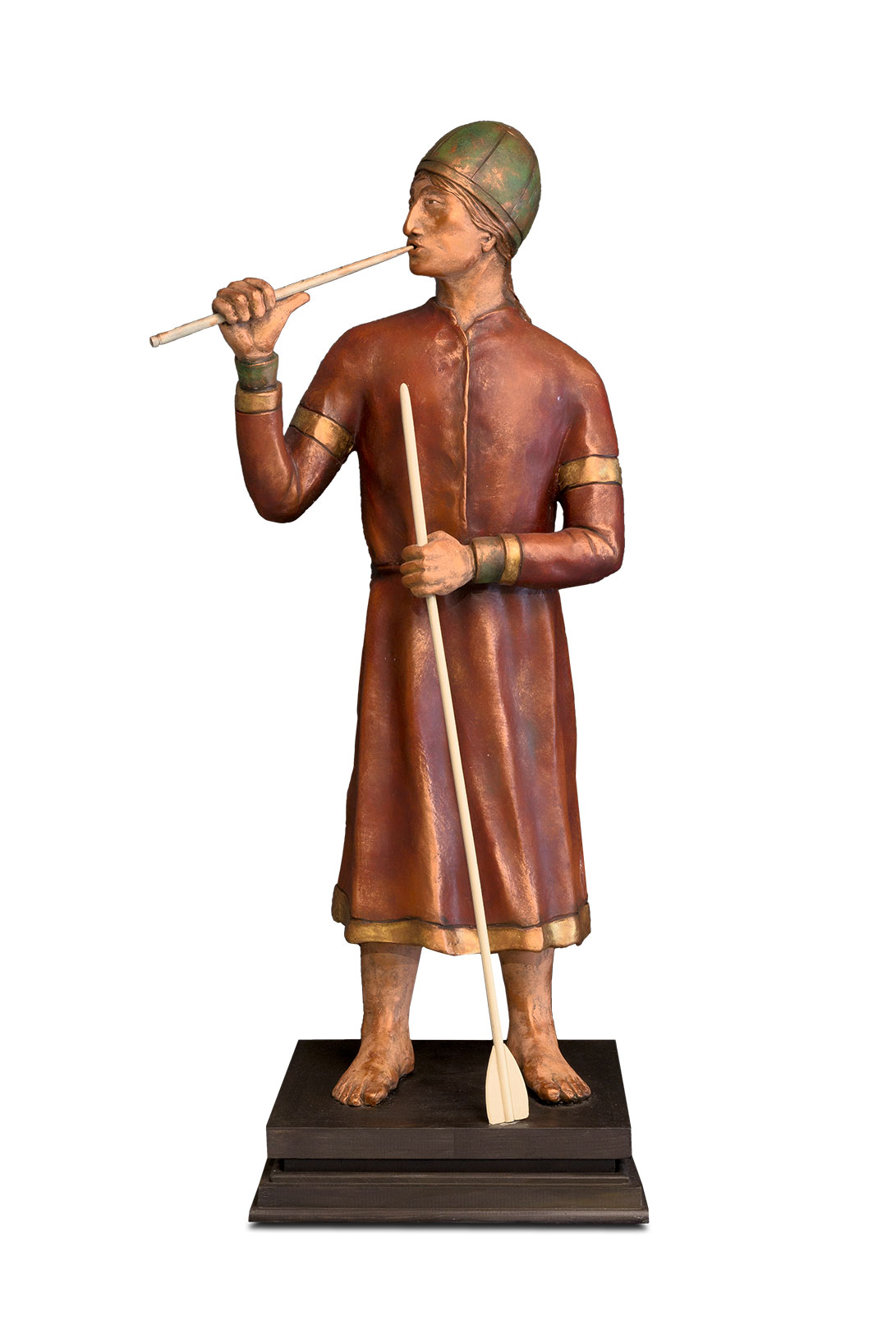
This is the magnified version of the piper figure Jazari used in his Boatman Water Clock. In the original size of the model, air going through the dress of this figurine gets pressurized by the rising water, and makes a sound through the slit at the head, giving the impression that the piper is playing his pipe.

